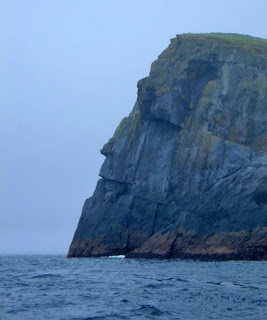The stack is 203 feet high. Its north cliff appears to have the profile of a face, visible when traveling to St. Kilda from the east. The skerry of Na Bodhan lies to the north east.
A stack is a geological land form consisting of a steep and often vertical column or columns of rock in the sea near a coast, isolated by erosion. Stacks are formed through processes of coastal geomorphology, which are entirely natural. Time, wind, and water are the only factors involved in the formation of a stack. They are formed when part of a headland is eroded by hydraulic action, which is the force of the sea or water crashing against the rock. The force of the water weakens cracks in the headland, causing them to later collapse, forming free-standing stacks and even a small island. Stacks can provide important nesting locations for seabirds, and many are popular for rock climbing - not to mention almost all stacks are named after some object the Resemble.
Extra! Extra! The Replica Report is the first to Recognize that not only is there a Resemblance to a face in the side view of the Stac, but also a Resemblance to a profile face in an aerial view of Stac Levenish.
Here are the coordinates so you can see for yourself on maps.google.com : 57°47'30"N 8°30'37"W
Source : http://en.wikipedia.org/wiki/Stac_Levenish
http://wikimapia.org/15894435/Stac-Levenish
https://en.wikipedia.org/wiki/St_Kilda,_Scotland
https://en.wikipedia.org/wiki/Stack_(geology)




No comments:
Post a Comment